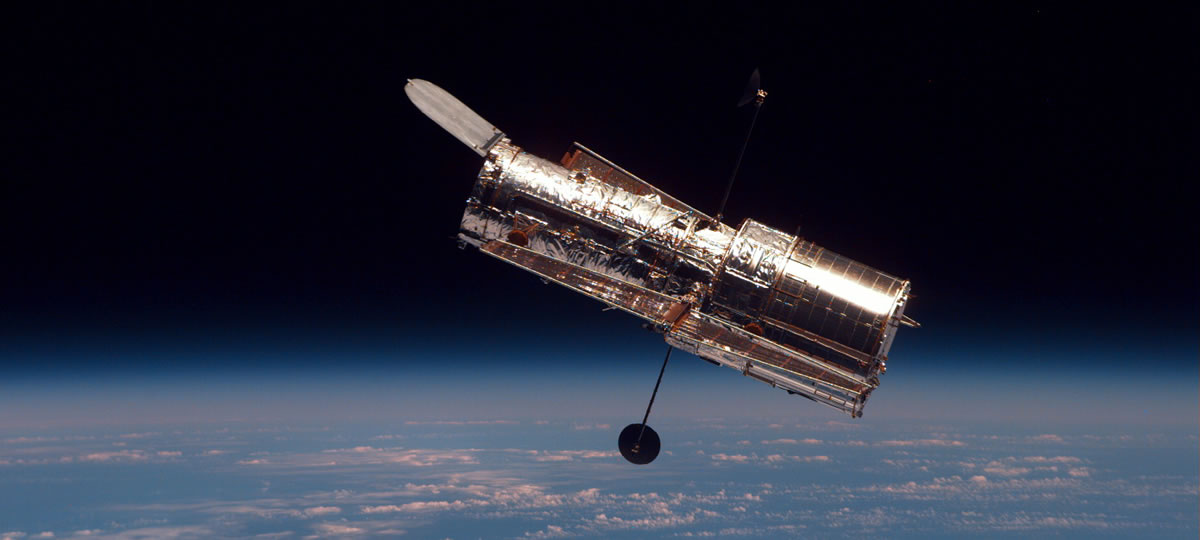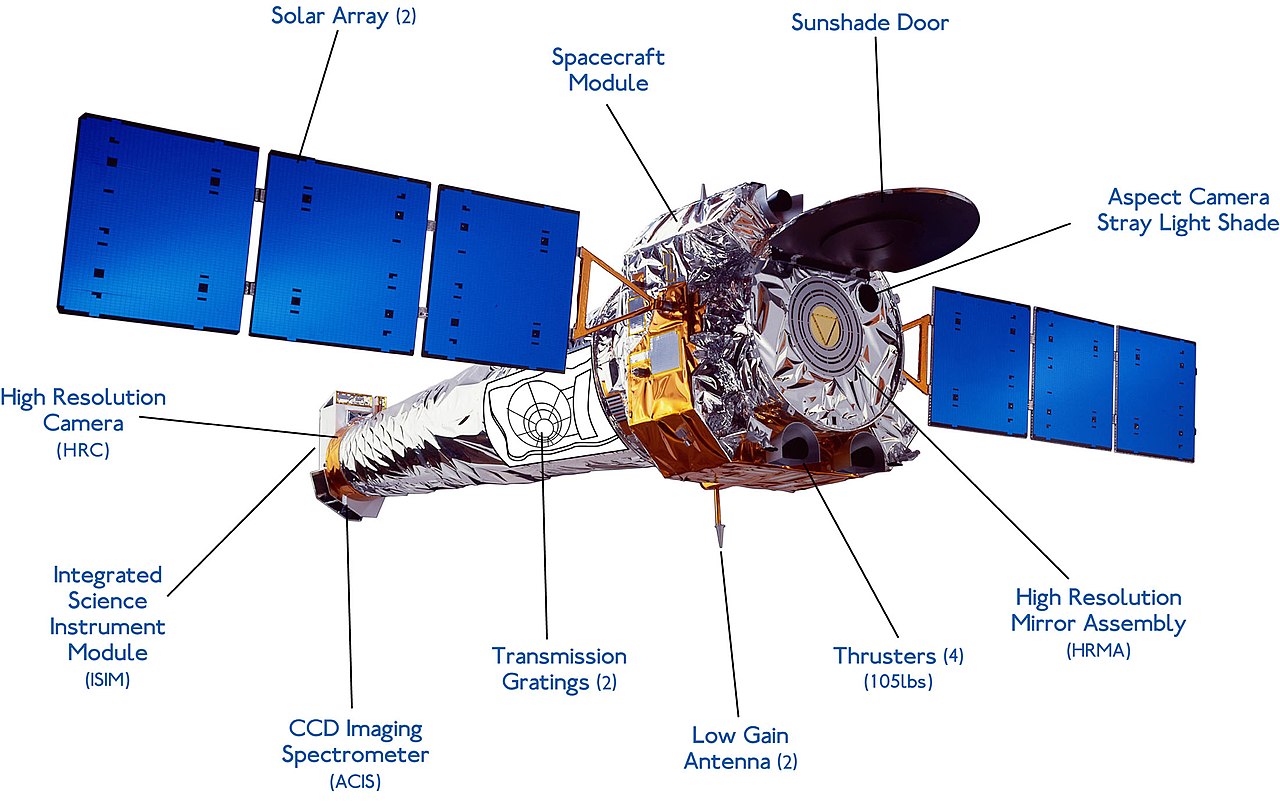Space Telescopes
13.32 - Understand the advantages and disadvantages of space telescopes and detectors, including orbital observing platformsOur knowledge and appreciation of astronomy has increased over the last two decades due to orbiting space telescopes. They have considerable advantages (and disadvantages) over terrestrial observatories.
Detectors are placed on satellites to conduct long term observation. Orbital observing platforms can include satellites and high altitude observing systems such as the aircraft of the Kuiper Airbourne Observatory or the long duration balloon flight HIREGS (High Resolution Gamma-ray and Hard X-ray Spectrometer).
Advantages
Clearer observations can be taken as the atmosphere does not affect it. There is no distortion due to twinkling, glow from the sky or the effects of light pollution.
Wider wavelengths of the electromagnetic spectrum can be observed such as infrared, ultraviolet, x-rays and gamma rays. These would normally be blocked by the Earth’s atmosphere.
No limitations to observing at night time. Also, a telescope such as Hubble can image an area over the course of several days (see Hubble Deep Field).
Disadvantages
There are some limitations with the Hubble Space Telescope when imaging the Moon due to its sensitivity to light and it cannot image areas in the direction of the Sun.
They are exceptionally expensive to build and position in place.
Maintenance is difficult. Gyroscope and motors that move the mirrors into place need updating. The Hubble Space Telescope was maintained twice at great expense before the space shuttle missions were discontinued and no further maintenance is planned.
Did you know?
The Hubble Space Telescope observes in the visible, infrared and ultraviolet regions of the electromagnetic spectrum.
Links
- Curious about astronomy What are the advantages and disadvantages of using a telescope in space?
- Hubble Site Images from Hubble
- NASA About the Hubble Space Telescope
- IFLScience Observatories on Earth / In Space
Space Telescope Links
- Chandra X-ray Observatory
- SOFIA Airbourne Observatory
- SOHO Solar and Heliospheric Observatory
- Spitzer Space Telescope Infrared Telescope
- STEREO Solar TErrestrial RElations Observatory
- Herschel Space Observatory Retired Mission




 | © All Rights Reserved |
| © All Rights Reserved |